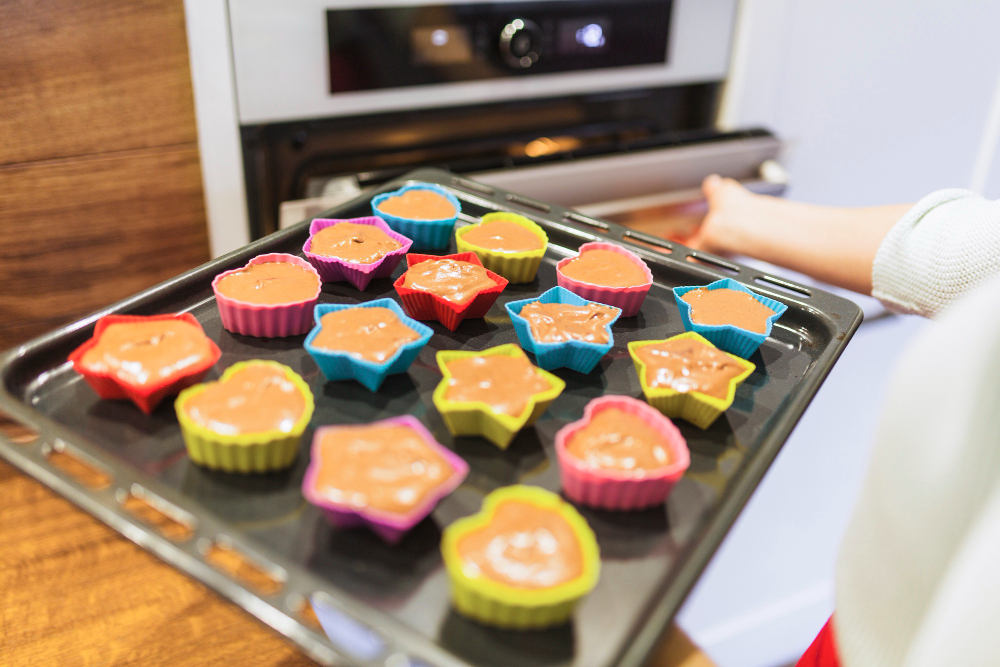
In recent years, the food industry has witnessed an innovative transformation that merges the worlds of culinary art and digital printing technology. With the ability to print complex designs and shapes, this technology opens doors to new and exciting food experiences. Beyond demonstrating its exceptional capabilities, digital print for food packaging offers unparalleled customization and flexibility that traditional preparation methods cannot match. This level of customization and efficiency can lead to significant cost savings and offers a competitive edge in the culinary world. This blog aims to cover the landscape of digital printing in the food industry, so read on.
Understanding Edible Printing
Edible printing is a process of using edible (food-grade) ink, printers, and edible paper to produce digital images, texts, and designs directly onto food surfaces or items meant for consumption. This technique is widely used to decorate confectionery items, including cakes, cookies, chocolates, etc.
A key feature of edible printing is edible inks, which employ food colour as inks to design print. Edible ink is carefully formulated from natural food colours supplied in inkjet cartridges and designed to be compatible with inkjet printers. On the other hand, this printing technique requires printers that are also compatible with food-grade ink. Available in various colours, sizes, and capabilities, these printers vary from compact desktop models to expansive large-format printers, catering to a broad audience. Notably, digital printing in the culinary sector stands out for its exceptional versatility, offering limitless opportunities for customization and creativity. Here are some of the applications of digital printing in the food industry you should be aware of:
-
Customized Food and Confectionery
It is no secret that the appearance and presentation of a dish influence a person’s experiences just as much as its taste and flavour. Nowadays, restaurants and confectioners focus on improving the customer experience by customizing and refining intricate food designs. From birthdays to wedding cakes, digital printing enables detailed designs and photographs to be printed directly onto the surface of cakes, offering a unique way to celebrate special occasions.
-
Food Packaging
It is important to note that digital printing is not restricted to food; it can be used to design personalized and branded packaging, including logos on burger buns or coffee cups. Moreover, digital printing empowers food packaging designers to experiment with vibrant colors, intricate patterns, and eye-catching graphics, thereby elevating the visual appeal of products and enhancing their shelf presence.
-
Marketing and Branding
Food businesses also use edible printing as a marketing tool. Printing their logos or promotional messages on food products enhances brand recognition and engagement.
Advantages of Edible Printing
Edible printing stands out for its exceptional versatility, from unparalleled customization to fostering innovation. Highlighted below are the key benefits edible printing brings to the culinary sector:
-
Unmatched Customization and Personalization
The advent of edible printing technology opens up new possibilities for unparalleled customization. Whether adding personal messages, replicating detailed patterns, or printing family photos onto cakes, digital printing facilitates limitless customization options, allowing for truly unique and personalized creations. For instance, engineers at Columbia University printed a seven-ingredient slice of cheesecake with an elaborate internal structure, demonstrating the endless possibilities of creativity.
-
Time-Efficient Operations
Efficiency in printing plays a crucial role, especially with professional bakers and businesses dealing with a high volume of custom orders. Integrating advanced printing technology within the culinary sector offers unparalleled efficiency, as it covers larger areas in a single pass, drastically reducing printing time compared to conventional models. This streamlined process ensures prompt order fulfillment while upholding the highest standards of quality in the final product.
-
Innovation
Edible printing promotes culinary innovation, opening doors for enhanced food presentation. It introduces new avenues for chefs and bakers to express their creativity with exceptional clarity, resolution, and precise detailing. This capability enables decorators to transform cakes into exquisite canvases for personalized designs, corporate logos, beloved characters, or cherished photographs.
Conclusion
Edible printing stands at the intersection of technology, culinary art, and personalization, offering exciting possibilities for the future of food. As it becomes more accessible and versatile, we expect to see even more innovative and customized culinary creations gracing our tables. Businesses seeking to harness these advancements should consider partnering with Atlantic Packaging, a leading player in digital printing services. Get in touch with us to learn more about our offerings!
